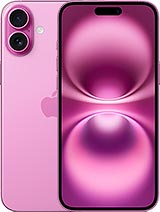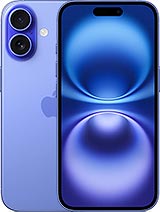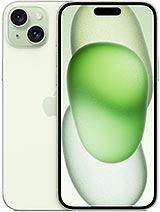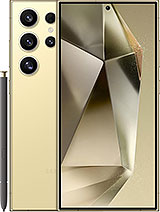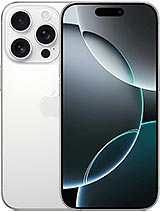Apple iPhone 16 Plus review

Display
The iPhone 16 Plus has the same 6.7-inch Super Retina XDR OLED screen found on the previous iPhone 15 Plus. This means the screen has 2796 x 1290 pixels (or 460ppi, which is the new density for Retina quality according to Apple) and a standard refresh rate of 60Hz. The screen supports HDR10 and Dolby Vision standards.

The iPhone 16 Plus OLED panel has a pill-shaped cutout called Dynamic Island. It is protected with a second-generation Ceramic Shield.
The display supports various niceties like True Tone adjustments; it is advertised for up to 1,000 nits of maximum brightness and up to 2,000 nits of peak brightness.
We completed our display test, and the numbers are as promised. The display offers 891 nits of maximum manual brightness and 1,823 nits of maximum automatic brightness.
The minimum brightness at point white was just 1 nit, down from the 2 nits we measured on past iPhones.
The screen has a standard refresh rate of 60Hz. It is not an LTPO panel and does not support always-on.
The iPhone 16 Plus supports HDR10 and Dolby Vision, and it is recognized by all known apps as such. Apple does its HDR video playback in a very flexible way since it's not necessary for the content to be displayed full-screen for HDR to work. It can just work on the portion of the display that has the video playing, which is a bit of a surreal experience the first time you encounter it.
Battery life
The iPhone 16 Plus boasts a bigger battery than its predecessor - 4,674 mAh from 4.383 mAh. This is a rather modest increase of around 7%, but the increase in actual battery life is a lot more than that. Perhaps we can give credit to the new iOS 18 and some hardware optimizations, mainly thanks to the new A18 chip.
Anyway, the iPhone 16 Plus achieved a record-breaking Active Use Score of 18:49h. It's a chart-topping battery endurance at the time of writing. It's probably safe to say that it's the iPhone with the best battery life to date.
Even though the gaming test isn't particularly impressive, the other figures are downright amazing. The handset got more than 19 hours of web browsing and more than 23 hours of video playback.
Charging speed
The iPhone 16 Plus supports fast wired charging, though Apple never reveals the maximum power rating. The company quotes an expected 50% charge in 30 mins with a compatible 20W charger.
There is also support for fast wireless charging for up to 25W via the new MagSafe charger when plugged into a 30W+ power adapter. If you have a compatible Qi2 charger, then the iPhone 16 Plus will max out at 15W.

Some initial rumors suggested the iPhone 16 series would support 45W wired charging, but that came out false. In our testing, the iPhone 16 Plus maxes out at around 30W. Apple promises 50% of charge in 30 mins with a compatible charger.
We carried out our test with a 45W PD charger. We clocked 27% charge in 15 mins and 55% in 30 mins. An hour on that charger refilled 85% of the battery.
In typical Apple fashion, charging the last 15% takes forever, even with the Optimized Battery Charging being turned off. In our testing, the last 15% took about 40mins, and the iPhone 16 reached 100% charge in 1 hour and 39 minutes.
Apple iOS 18 supports Battery Health option, which should prolong its lifespan even more - you can set the charge limit between 80% and 100%. You can also see the cycle count and battery health in the battery settings.
Reverse wired charging is available on the iPhone 16 Plus; it usually maxes out at about 5W.
Speakers
The Apple iPhone 16 Plus has a typical hybrid stereo speaker setup where the earpiece is one of the speakers. The other speaker is at the bottom of the phone, next to the USB-C port.
Both speakers sound incredibly well in real life with deep and balanced audio.
The iPhone 16 Plus scored a Very Good mark on our speaker loudness test, and it offered excellent quality with balanced audio and plenty of rich output across the board.
Use the Playback controls to listen to the phone sample recordings (best use headphones). We measure the average loudness of the speakers in LUFS. A lower absolute value means a louder sound. A look at the frequency response chart will tell you how far off the ideal "0db" flat line is the reproduction of the bass, treble, and mid frequencies. You can add more phones to compare how they differ. The scores and ratings are not comparable with our older loudspeaker test. Learn more about how we test here.
Reader comments
- Pogi
- 29 Apr 2025
- jsm
Does iPhone 16 Plus also has a Heating problem/issue? anyone exp. even normal use (excluding gaming, Heavy apps.)?
- jack parsa
- 19 Nov 2024
- jpU
Apple’s pricing strategy is indeed a testament to their mastery in balancing innovation and profitability. By carefully selecting which features to introduce across their lineup, they ensure that every model appeals to a specific audience while ma...
- jack parsa
- 19 Nov 2024
- jpU
The iPhone 16 Plus indeed occupies an interesting spot in the lineup. It’s true that it offers a larger screen and the best battery life among the iPhones, which makes it an appealing choice for users who prioritize media consumption, gaming, or e...

